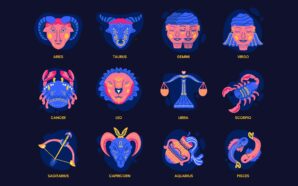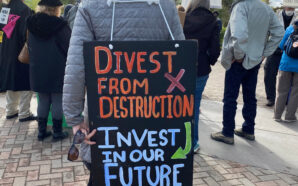Arturo Hilario
El Observador
Vicente Quirós is part of an iconic and award-winning Spanish circus family of high-wire artists and performers who have innovated and continued the traditions of circus performance for six generations.
For the past 17 years Quirós has been a performer for Cirque du Soleil’s KOOZA, the show that emphasizes the classic performing arts of the circus with the elevated style and daring acrobatics for which the company is known.
Quirós, still agile and performing in his sixties alongside his brother, is one of five original KOOZA artists who have been in the show since its opening in 2007. His act is a dazzling double-string performance that carries the classic performance circus to another level.
In the following interview, Quirós talks about his family legacy, how KOOZA celebrates the traditional circus, the effort it takes to work in the acrobatic arts, and why you can’t miss this show.
KOOZA comes to San Jose under the big top at the Santa Clara County Fairgrounds from April 18, 2024 to May 26, 2024.
To start, can you talk a little about your family, where you come from, and what it’s like to be part of a family of artists?
Yo soy la 6.ª generación en la vida circense de tradición de circo. Mi padre era trapecista y mi madre era de Madrid y era cantante cuando era joven, pues ganó su primer premio con 16 años y también fue a la televisión y allí ganó premio, pero luego lo dejó todo porque fue al circo a trabajar a Madrid y vio a mi papá y se enamoró del trapecista y aquí estamos nosotros.
I am the 6th generation in circus life of circus tradition. My father was a trapeze artist and my mother was from Madrid and she was a singer when she was young, she won her first prize when she was 16 and she also went to television and won a prize there, but then she left everything because she went to work for the circus in Madrid and then she saw my dad and fell in love with the trapeze artist so here we are.
This is how my life began, I come from many generations and my parents with their brothers and my grandfather, they have a circus in Spain and they are still working in all parts of Spain such as Madrid, Barcelona, Valencia, Gijón, everywhere in Spain. When we were little, we went to school, we stayed with our grandmothers and we wanted to be soccer players, but my father said, “No, it’s time for them to come to the circus because we want to continue the tradition.”
My father took us to the circus and we started rehearsing and that was our childhood life.
And how did you become part of Cirque du Soleil?
Well, we started doing what we do, which is wire, we worked in my family’s circus for about four years and then the big Spanish companies saw our work and hired us. Then we went to work in the best circus in Spain and then, after about two years, we went to work in Australia. Our first contract was in 1983. Imagine, 41 years ago.
And from there everything went very well for us because we did all the best shows in Europe, the best circuses, we were all over the world and we also went to compete in Monte Carlo and won the gold prize. It was given to us by Princess Stéphanie and her father. We are the only wire fencers in the world who have won the gold award.
And Cirque du Soleil was always chasing us with their agents and they wanted to hire us. But we were very young so we decided not to come to this wonderful company. Then years passed, we won the gold award. We also competed in Russia and always win gold medals, thank God, for our good work.
And they told us, “we are going to open a new show, it’s called KOOZA and there will be many circus-traditional acts.” So we thought, well, let’s go to Cirque du Soleil and then we’ll sign for two years and look, I’ve already signed my 17th, 17-year contract, that we’ve been here now. That’s how it all went, more or less. To give you an idea, right?
Since you’ve been there since the beginning, did you have any involvement in the creation of the wire act?
Well, look, we do tall wire, but only one. And over time I had a good idea of making a double wire. So we made a wire at the top that is about ten meters, and the one at the bottom that is about six meters.
So Cirque du Soleil loved how we worked. Because a double wire, you don’t see it in any circus because it is a very, very large device. It is an attraction by itself. So the engineers came, the specialists from Cirque du Soleil from Montreal, and they came to where we were working that year at the San Fermín festivities, in Pamplona, which is very important, so they went there and also did our device.
So they got an idea, we told them how thick and long the cable was, more or less, then they came back here to Canada, and they made an even more beautiful device than the one we had, very dynamic, it’s incredible. Because it takes about a minute and a half to assemble, it’s amazing.
A double wire with so many cables and so many machines is an incredible thing. Just seeing the assembly of the device with the special effects that they do is already something incredible to see. It’s a show by itself, you understand me?
So they made all our apparatus and the circus antennas are attached to it, which are very strong. The circus is big, tall. And that was more or less everything. When we perform, well, all the people are standing, everyone is very happy, we are happy, because we are in the best company in the world and very responsible and professional.
And now that you’ve been there so long, what have you learned about that experience?
Well, after my trajectory, what I’ve learned is a lot of discipline. I’ve learned that you can be a good artist, but keeping yourself up there is the most difficult. Things like being very professional because everything is very very professional, and for example, it has many things that other circuses don’t have, for example, we have a kitchen where all the artists eat together, we have physiotherapy with our doctors and if something happens to us, they give us massage.
Well, all those things that for me have been something incredible, that are not present in other shows. We have lived in luxury apartments, and all of that is what gives me a good mouth taste here at Cirque du Soleil. I feel serene and they care a lot about the artists, here one is an artist, here at Cirque du Soleil we are real artists. They treat you like an artist and if your finger hurts or something happens to you, you quickly go there with the physiotherapists, they look at you, and they decide, “don’t work today, because it’s dangerous.” They give you two days of rest. Those are the things that I really like. And one maintains itself better after the years.
What are you thinking when you are there on the wire? Are you in the zone and blocking the audience? Or do you also take note that there are people watching this show?
I’m going to explain more or less a little bit of everything so you understand. Before working we warm up for 45 minutes, and what do we think? In doing a good job, whether there are many people or not, whether it’s full or there are only a few people. We always try to give our best because you can’t slack off, because if you do you can fall. Always looking forward to it.
Our act consists of running on the wire, jumping, dancing, we fight with swords, and we jump four people at the same time on the rope. My colleagues and my brother jump one person, then two, then they climb one person’s shoulders and we end up with pyramids, with bicycles. One in front, a bicycle, another bicycle behind, a bridge between one person and the other, then a chair on top. My brother climbs up the chair and stands up. This is what our number consists of. But when we work, for us the most important thing is that people applaud and that they like our act.
Because for the artist the most important thing is the public’s applause, right? And when I work, before work, I always tell my colleagues and my brother, “The most important thing is to work hard and not miss a foot so we don’t fall.” And of course, when I work, what I think most about is that there is no failure because we know we have our safety net, but it is always better not to fall.
And that’s what I can tell you, because for us the important thing is always to do an excellent job and we are very prepared and thank God we have been there for 17 years and we have not fallen, in 17 years, there have been about 5,000 shows and if we have not fallen it’s because of our professionalism, because we go to bed early. I don’t drink, I don’t smoke. I go to bed early and get up in the morning ready to rehearse with my brother and my colleagues.
Yes, that’s what our work consists of, a lot, a lot of discipline and professionalism.
Since you were little you have always worked with family. Now you continue working with your brother. What is it like to have that connection to family since you work with him every day?
Well, as I tell you, there is nothing better in this life than when you work with your brother from the beginning, because it’s like when you build a house, right? You build the foundation very well and then the house will not fall.
When I started working with my two brothers, hey, when we work like we have for so many years, if I’m running on the wire and I’m going to jump wrong, my brother, because of so many years of experience that we have learned together, he knows if I’m going Crooked or not, I’m going to go to the right, to the left, you know, and which way to stand so that I don’t fail.
It’s like telepathy. I don’t know how to explain it, but after so many years of working together there is nothing better in this life than working with your own brothers. Because if I am tired, I am working and I feel tired, I have a bar to balance that weighs about 30 kilos and I think I am going to fail and I am not going to withstand, I think, “No! He’s my brother. He’s up there, on top of my shoulders, he’s on me, how am I going to fall?” And then I get stronger and resist.
That is something very, very important about working with your brothers, because we know each other and we know how to do it. When you change with many artists it is no longer good because as different people come, you have to teach them and all of that is more difficult to integrate them into the group, but when I work with my brother it becomes easier for me. Well, since telepathically we already know how to do everything.
How does it feel to be part of the legacy of not only this show but the legacy of Cirque du Soleil?
Well, for us artists, Cirque du Soleil is the goal. It’s like when you start a race that is very long, for a lifetime, and in the end you reach the finish line. And I am in Cirque du Soleil, it is the best company, where you are an artist, where they treat you well and it is the best for an artist, everyone wants to come to Cirque du Soleil. It is difficult to enter because you have to be very prepared, be very professional, respectful, and follow their rules. For us, as artists, because the goal of an artist is to get here and stay here. That’s something wonderful, it’s the top.
And well, finally I wanted to ask why you would recommend people come and see the show?
As a circus artist I can tell you something incredible. Look, come here to the KOOZA show you know you’re going to see something top class, something well done, something well prepared. Behind the show there are hundreds of people who have done their best to make such a good show.
I can tell you that there are shows that are done in a month, in two weeks, in a month and a half, KOOZA took more than eight months to become a show. Everyone’s rehearsing day after day. It is top quality.
Vas a ver algo muy bueno. Entonces el Cirque du Soleil siempre te presenta un espectáculo. Cada espectáculo es diferente. Cada uno tiene su historia y todos son muy buenos. Y cuando vas a ver el espectáculo, nadie te molesta. No hay nadie vendiendo dentro del espectáculo ni nada. Se cierran las puertas, empieza el espectáculo hay un respeto muy, muy grande.
You’re going to see something very good. Cirque du Soleil always presents you with a different show. Each one has their story and they are all very good. And when you go to see the show, no one bothers you. There’s no one selling inside the show or anything. The doors close, the show begins, and there is huge, huge respect.
So you are going to see something of super quality as I tell you, when we go out at the end we see people crying and they tell us, “thank you, thank you, I love you, I love you.” Yes, that is such a beautiful thing for an artist.
That’s why the audience reacts and stands up, and with that we know that our show is very good, that it always pleases us and makes us happy. And the next day we really want to work again to see all the people who come see us.
Vicente, is there anything else you want to add?
Well, truthfully come to see the show because as I said, Cirque du Soleil shows are not permanent, they do not stay in the same city. We are here for a month or two and we are going to different countries and we are not coming anymore and people are going to miss it.
And it would be very, very sad for them to miss a show of this caliber. It is immense, it is a very generous show. It’s like when you go out for a great meal, a good drink, a good aperitif. Then you get your good dish, then your second dish and with a flourish they give you one of the best desserts there is. This is the KOOZA show, just for comparison. One ends up feeling like a king.






